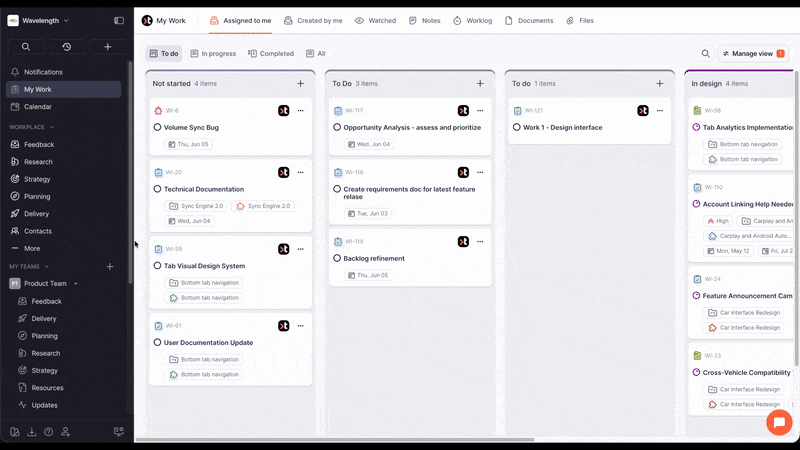Timebook bridges discovery and delivery with a seamless two‑way sync with Jira
Joe Fields
In product development, the gap between discovery and delivery has always been one of the most persistent challenges. Teams invest countless hours uncovering customer needs, validating ideas, and prioritizing opportunities, only to see that hard-won insight get lost in translation when it’s time to execute.
At Timebook, we believe that discovery and delivery should be two sides of the same coin. That’s why we’re thrilled to announce our complete Jira integration: a seamless bridge that automatically synchronizes work between discovery and delivery, ensuring consistent data across both platforms without the need to switch tools, enabling product teams align strategy, research, and execution.
Traditionally, these two worlds have been siloed: discovery insights live in one tool, delivery tasks in another. The result? Misalignment, duplicated effort, and a constant game of “telephone” between teams.
Every time a product manager has to copy insights into Jira, or an engineer has to chase down the “why” behind a ticket, valuable time is lost. Worse, critical context often slips through the cracks.
Our Jira integration eliminates that friction. With Timebook and Jira working in harmony, discovery flows directly into delivery—no manual handoffs, no lost context, no switching between tools.
Here’s what makes this integration a game-changer:


Synchronization between Timebook and Jira is enabled by linking a specific Team in Timebook with a specific Jira project. This allows Work Items in the Team to sync with Jira issues. The synchronization is two-way, meaning changes made in one tool can be reflected in the other.
The following Timebook Work Item attributes are mapped to Jira issue attributes:
Attributes based on type selection, such as Status, Issue Type, and Priority, are generally mapped by name and are case-insensitive. This means that as long as the names match, capitalization doesn’t matter. To explore this in more detail please read our help center article by clicking here.
The pace of product development has never been faster. Teams are under pressure to deliver value quickly, while also ensuring that what they build truly matters to customers.
By bridging discovery and delivery, Timebook’s Jira integration helps teams:
This isn’t just about efficiency, it’s about building better products, faster.
A product manager synthesizes customer interviews in Timebook and identifies a recurring pain point. They validate the opportunity, prioritize it, and sync it directly to Jira. The engineering team sees the new issue in their backlog, complete with context from discovery. No copy-paste required.
An engineer updates the status of a Jira issue to “In Progress.” That update flows back into Timebook automatically, so the product manager can see delivery progress without leaving their discovery workflow.
Once the feature ships, leadership can trace it back to the original customer insight in Timebook. This creates a clear line of sight from discovery to delivery to impact.
This integration is just the beginning. Our vision is to create a fully connected product development ecosystem—where discovery, delivery, and measurement are seamlessly integrated.
Future enhancements will include:
The launch of our Jira integration marks a major milestone in our mission: to help product teams build with confidence, clarity, and speed.
By bridging discovery and delivery seamlessly, we’re eliminating one of the biggest sources of friction in product development. No more lost context. No more manual handoffs. Just a smooth, evidence-based workflow from idea to impact.
We can’t wait to see what you build with it.